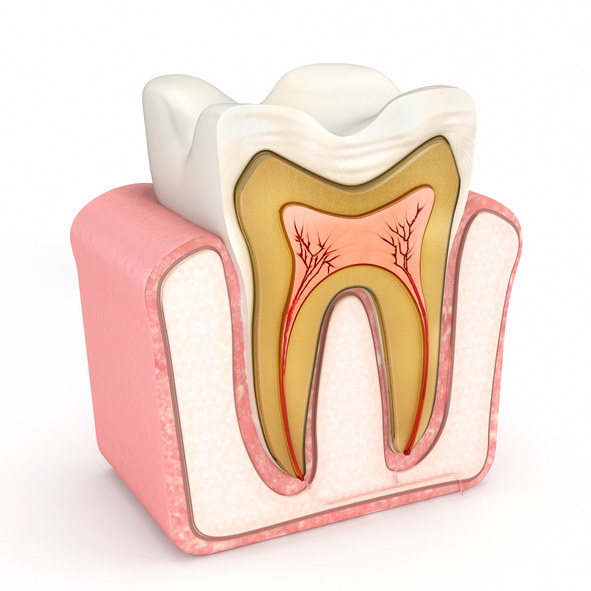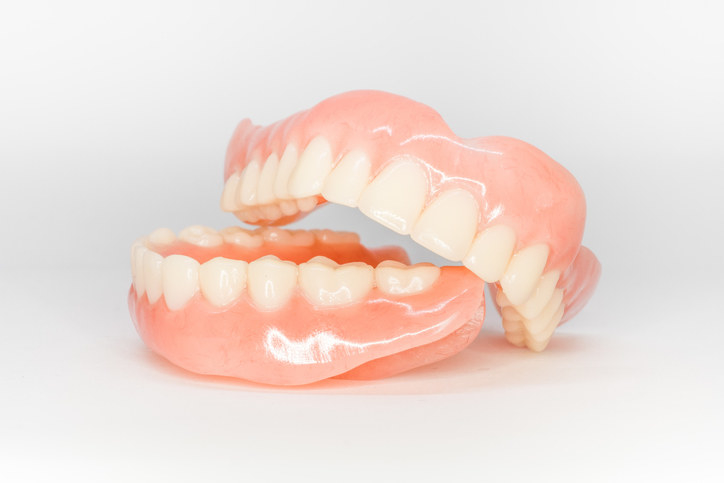It only takes a quick search of the word "veneers" on TikTok to find tons of videos like this one:
In the trend, users show all of their teeth filed down in a before pic and then covered with crowns in an after pic, showing off what they call their new veneers.
The videos have been alarming to dozens of dental professionals, and many of them have made videos — like Dr. Shaadi Manouchehri's TikTok below — warning others about the dangers of getting this procedure done:
BuzzFeed spoke to Dr. Manouchehri, who is a London-based dentist with post-graduate training in restorative dentistry and oral and maxillofacial surgery. "I was horrified when I first came across this trend — not only at the state of the teeth, but also at how it was portrayed as a badge of honor. I didn’t understand why young people with seemingly healthy and aesthetic teeth were having their teeth shaved down to pegs, and why they were referring to these restorations as veneers. I was also concerned at the number of comments from people saying they were considering having this treatment done," she said.
She explained that these TikTokers had actually just gotten crowns on all of their teeth — not veneers. "Crowns and veneers have some similarities, however, they are very different restorations. Veneers are usually used for cosmetic improvement of anterior teeth or to mask any developmental abnormalities of the teeth that may have affected their appearance. Crowns, on the other hand, are typically used to restore compromised teeth that may already have multiple existing restorations. They may also protect posterior teeth that have been treated with a root canal," Dr. Manouchehri told BuzzFeed.
She added, "Veneers will usually only cover the outer surface of the tooth, and they can be as thin as 0.5 millimeters. We can even sometimes do 'no-prep veneers' that leave no damage to the underlying tooth whatsoever. A crown will cover the entire surface of the tooth and will often need around two millimeters preparation of the tooth, so is much more destructive than a veneer."
So, why are getting crowns on all of your teeth so dangerous? Well, there are several reasons. First of all, once you remove tooth structure, you can never get it back. Another reason is that you have nerves inside your tooth that can get damaged. Dr. Manouchehri explained, "The tooth is made up of the outer layer, which is the enamel, and underneath the enamel is dentine — a slightly softer mineral that has tiny little channels that communicate with the pulp of the tooth. This is where the nerves and blood supply of the tooth reside. Every time we take a drill to the tooth and remove enamel, we get closer to the nerve and risk compromising its integrity. Additionally, the increase in temperature that is generated as a result of using the drill can also compromise the nerve."

In addition to nerve damage, crowning every tooth also poses long-term risks, such as tooth sensitivity, pain, or infection — and the possible need for a root canal or extraction. "These restorations may need to be replaced multiple times in the future and, every time the tooth is prepared for the next restoration, more tooth tissue will need to be removed and the tooth may ultimately be deemed un-restorable if there is insufficient tooth tissue remaining," she said. "Un-restorable teeth may need to be extracted, and the patient may need to have dentures or implants to replace their missing teeth."

When it comes to cosmetic dentistry, Dr. Manouchehri said the main goal is to achieve the desired aesthetic outcome with minimal damage to the teeth. "A popular way of improving the appearance of teeth whilst being conservative of tooth tissue is the 'ABC method.' This is where we align the teeth first to ensure they are in the optimal position. We then bleach the teeth with professional teeth whitening products to ensure that the teeth are as white as they can possibly be naturally. The last step is contouring, where we improve the shape of the teeth — usually with composite bonding. This method has been very popular lately as it can yield incredible results with minimal damage to the teeth."
If you are considering getting a cosmetic dental procedure like veneers, it's important to remember that most dental treatments require long-term maintenance. She explained, "Some restorations, such as crowns or veneers, may need to be replaced altogether every 10 to 15 years. So, please consider the financial and biological obligations that you are committing to when considering these restorations."
When it comes to dental care, every single person is different. "Some restorations may never need to be replaced, and some may need to be replaced very soon after they were initially placed. The advice that we provide is evidence-based and usually based on our clinical experiences. Your dentist will be able to provide you with detailed, personalized advice. Also, please remember that opting for what may seem like the least expensive option initially may end up costing you more in the long run," Dr. Manouchehri said.
